20+ Most Epic & Underrated Cenotes in the Yucatán Peninsula
11 min readLooking for the best cenotes across the Yucatán? In general, three types of cenotes are found in the Yucatan Peninsula. And the Yucatán Peninsula consists of three Mexican states: Yucatán...
The post Mexico’s Sacred Underworld: Exploring the Best Cenotes in the Yucatán Peninsula appeared first on Bucketlist Bri.
Disclosure: This post may contain affiliate links, which earn me a small commission from bookings at no extra cost to you. Thank you for reading and supporting my blog!
Looking for the best cenotes across the Yucatán?
In general, three types of cenotes are found in the Yucatan Peninsula.
- Closed cave cenotes (underground or flooded caverns).
- Semi-open cenotes (half cave, half open-air).
- Fully open-air cenotes that resemble small lagoons, ponds, or natural pools.
And the Yucatán Peninsula consists of three Mexican states: Yucatán to the north, Quintana Roo to the east, and Campeche to the west. If you’re looking at a map, you’ll see these states form somewhat of a triangle.
Renting a car and road-tripping the Yucatan Peninsula is the best way to discover the underrated cenotes across all three states.
The deeper you go in Yucatán state, perhaps the better, as you’ll encounter fewer crowds and even more little-known cenote gems.
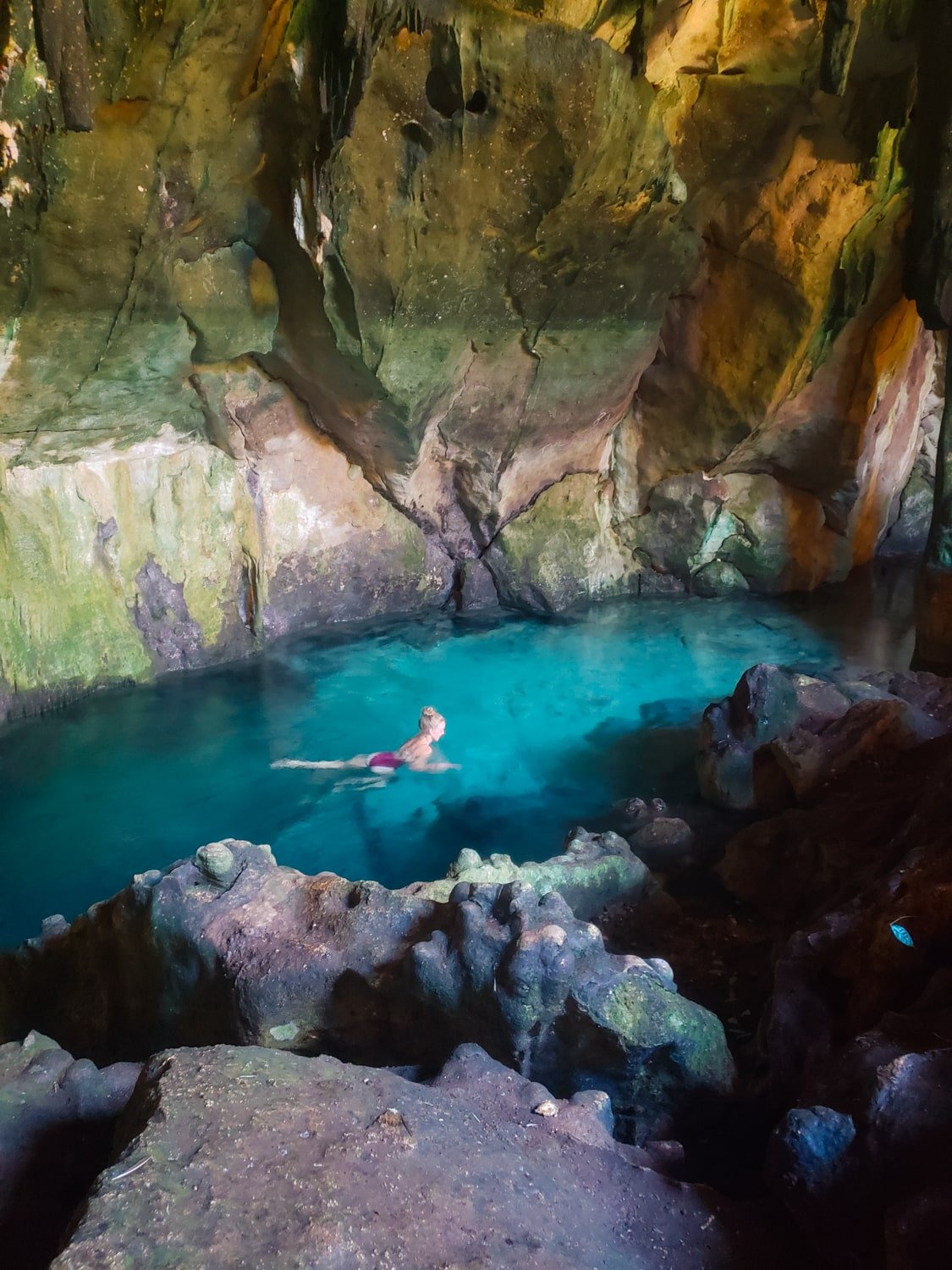
However, now, with the controversial Tren Maya (Maya Train) connecting Cancún with the rest of the Yucatán Peninsula and, additionally, the states of Chiapas and Tabasco, you’ll have quicker access to major destinations (and cenote hot spots) such as around Mérida (the “White City” and sprawling capital of the Yucatán), Valladolid, and Chichén Itzá.
But what are cenotes anyway, and what do we have to thank for these Mexican natural wonders?
Science points to the Chicxulub crater impact, which struck the Yucatán approximately 66 million years ago.
Despite the devastation caused by this cataclysmic event, cenotes can be considered a more recent (in the last 130,000 years or so) (and magical) consequence.
Spiritually, cenotes are sacred to Maya culture and are considered portals to the underworld.
Many Maya people used (and still use) cenotes as a place of ceremonial practice. It’s not uncommon to find relics of these religious ceremonies in their murky depths.
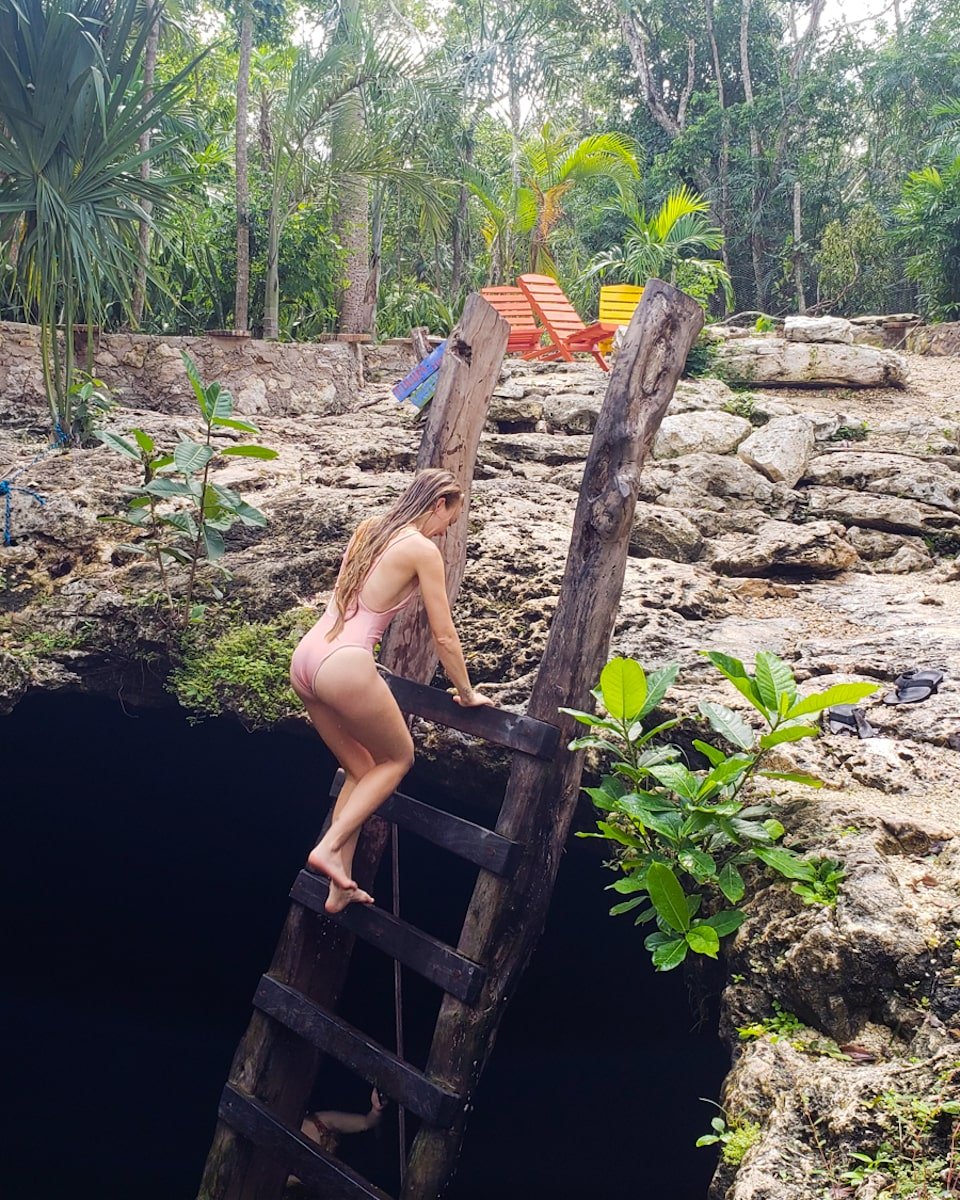
In this guide, I’ll cover some of the best cenotes you can visit across the Yucatán Peninsula!
While you can’t visit ALL the cenotes (as that would be impossible—there are over 6,000!), the cenotes in this post offer the best experience and accessibility.
🌿 Please be extra mindful when visiting Mexico’s cenotes; they are not natural swimming pools for our enjoyment—they are fragile ecosystems with cultural significance and deserve preservation and respect. Don’t wear sunscreen, pack out trash, and don’t disturb fauna or flora!
show
20+ of the Best & Off-Radar Cenotes Across the Yucatán Peninsula
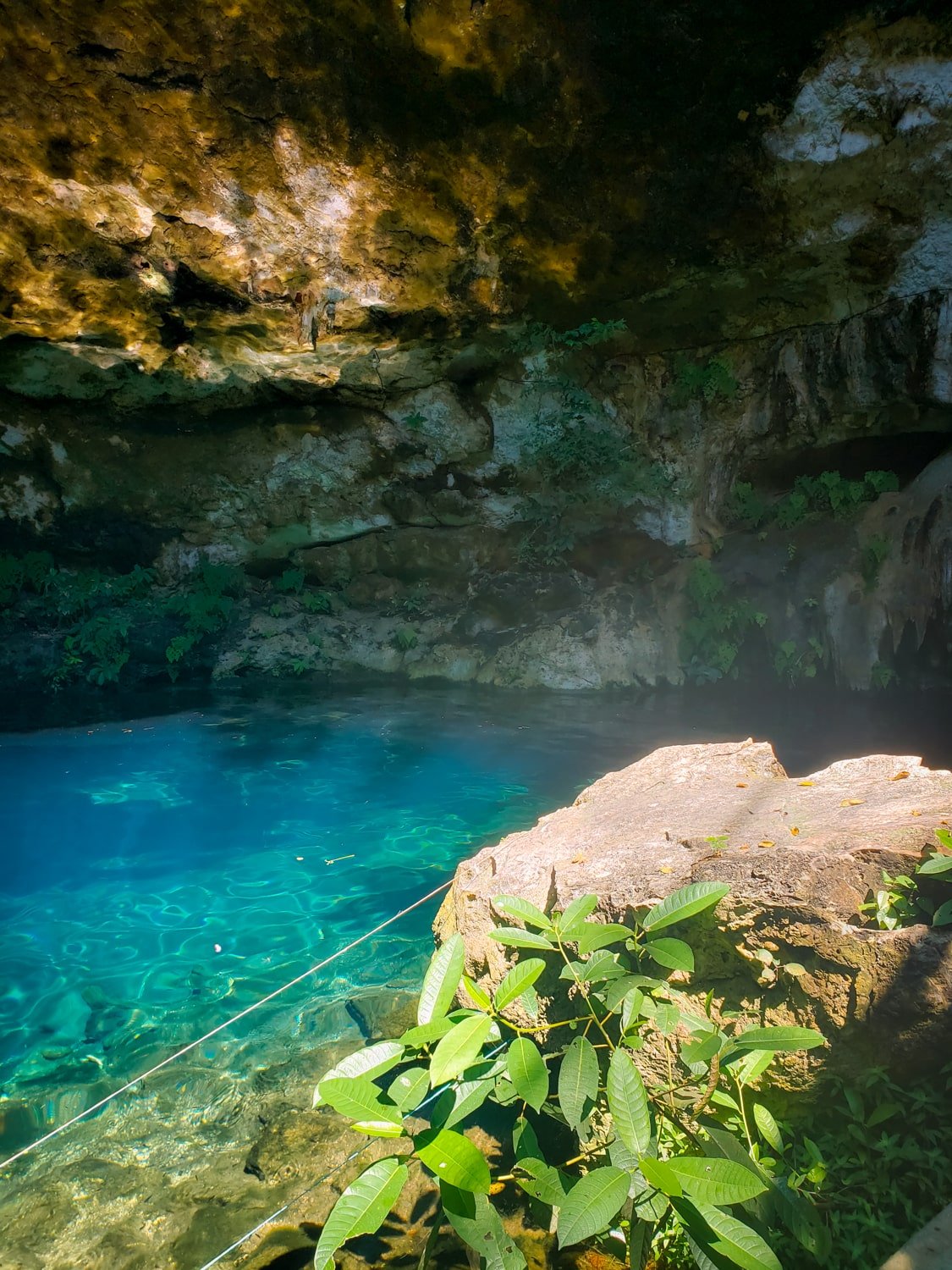
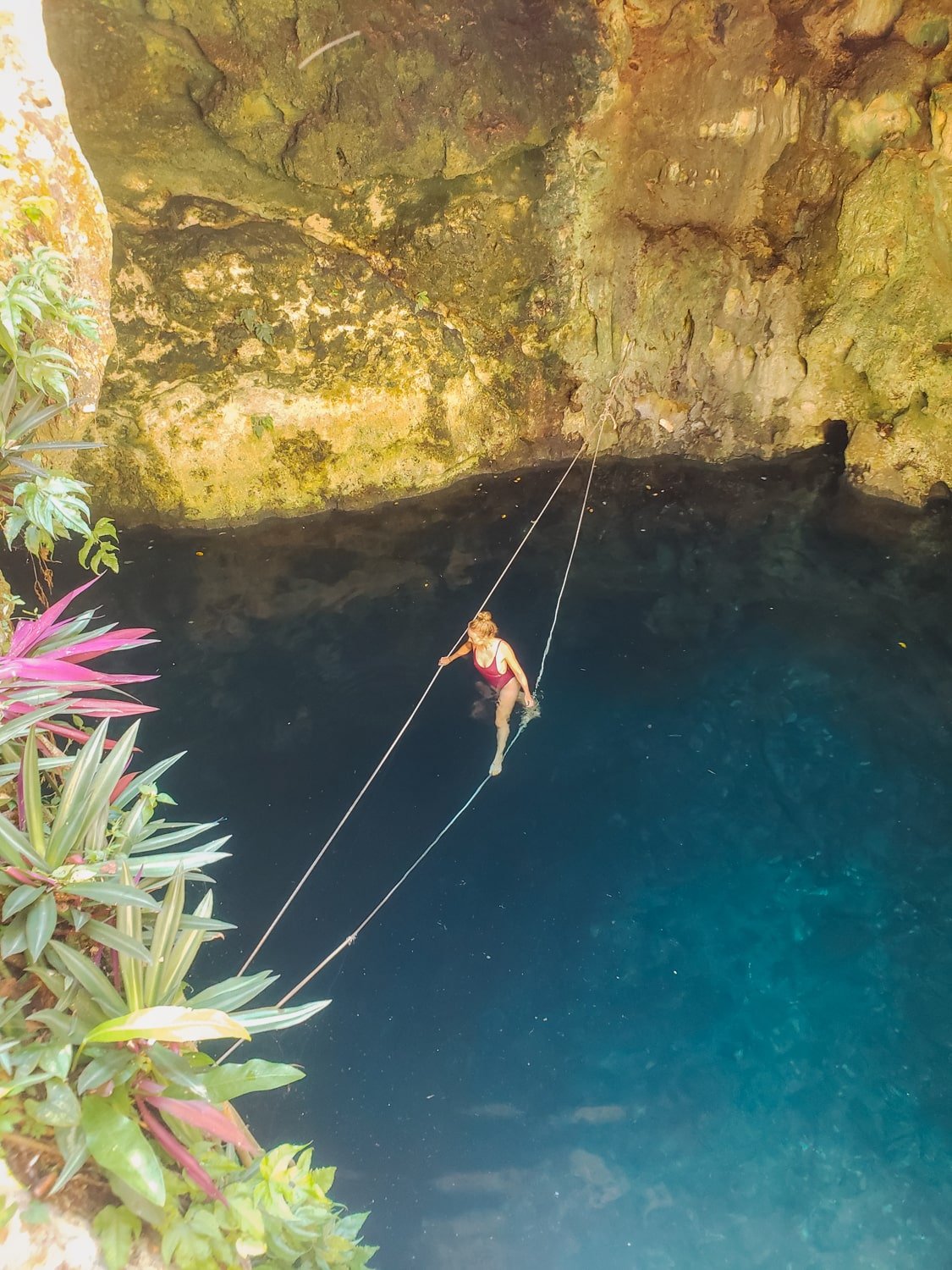
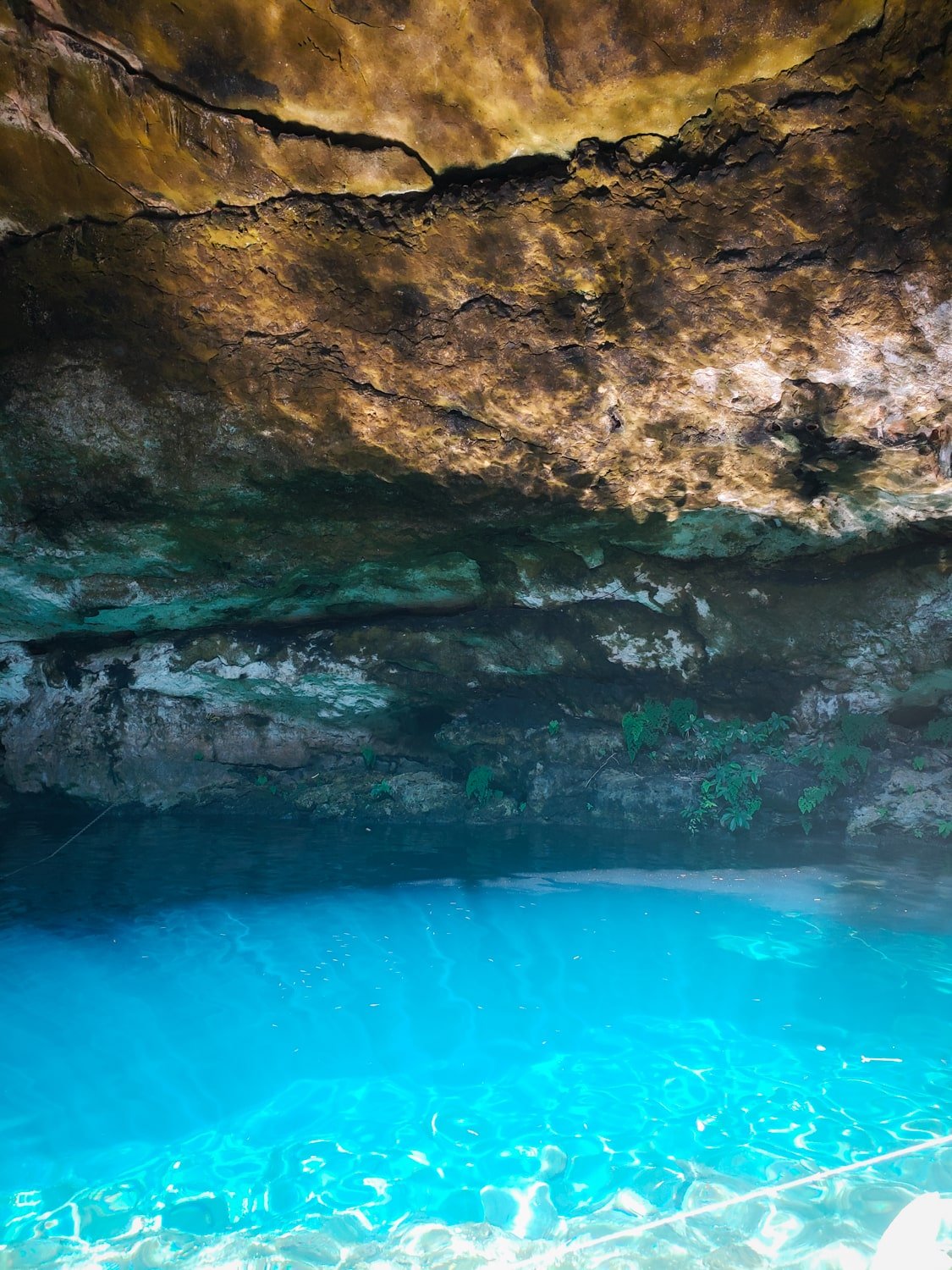
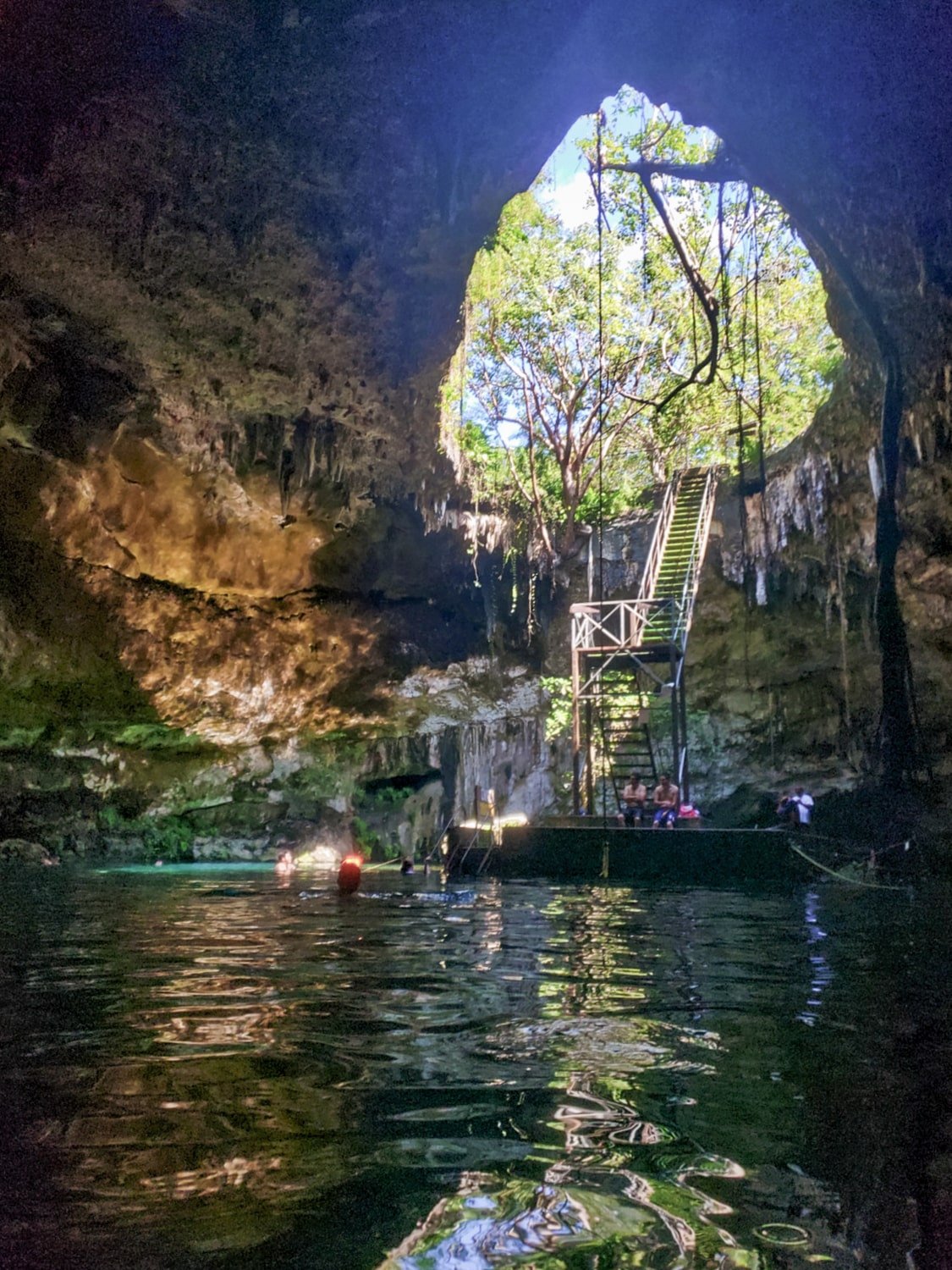
This guide would be ENORMOUS if I included every cenote across all three states.
Instead, I’ll share my favorites near the most significant towns/cities in each state (including the famous and must-see and more unique and less-visited cenotes).
I will go ahead and share that I think Yucatán state has the most underrated cenotes!
On the contrary, while they’re still beautiful and worth seeking out, the most popular and well-known (read crowded) cenotes are in Quintana Roo, along the Riviera Maya.
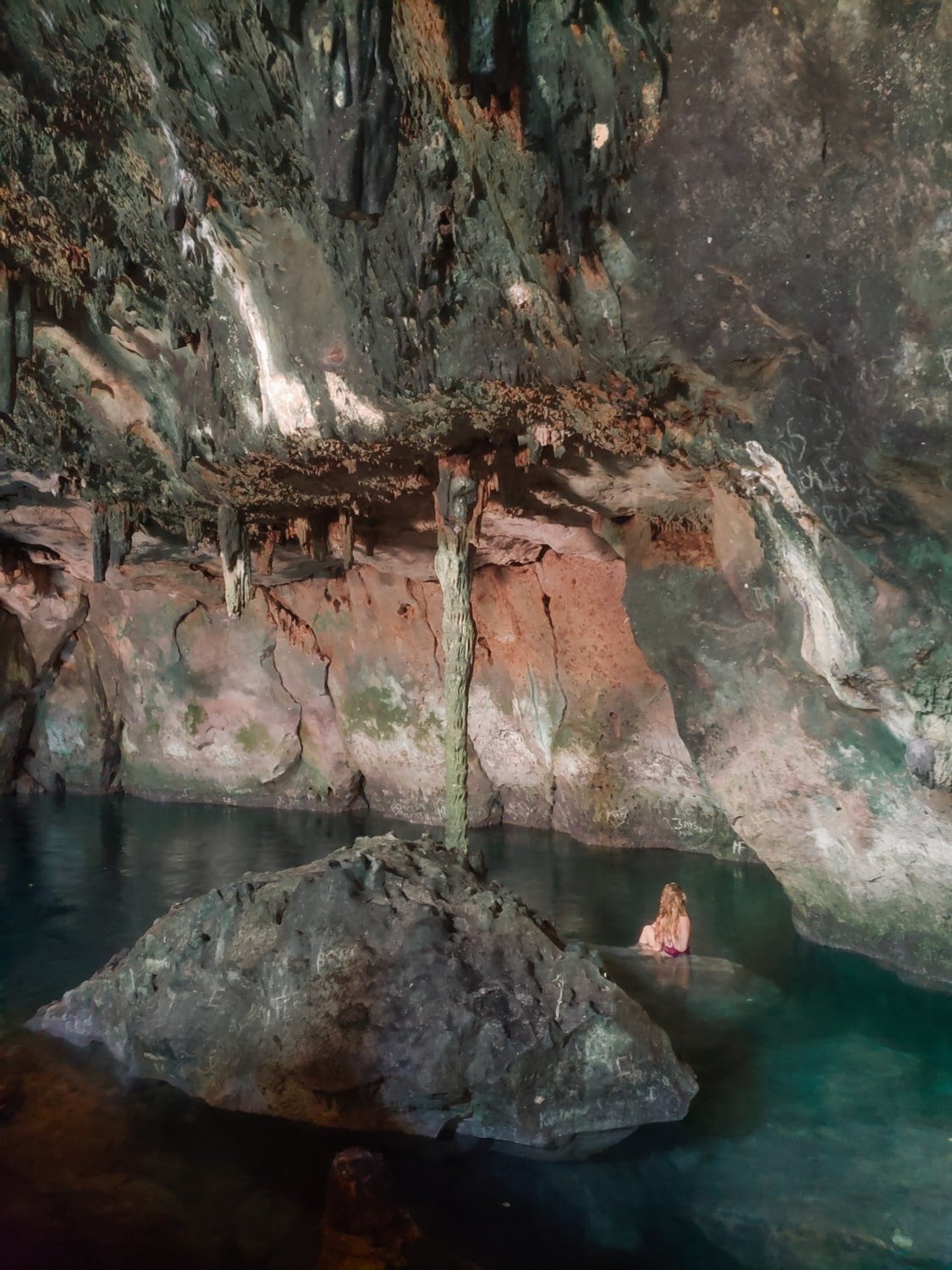
Note: With a few exceptions, most of the cenotes featured in this guide require a scooter or rental car to reach as they are more remote and off the beaten path! For renting cars in Mexico, I use Discover Cars (best rates, no hidden fees).
If you’re more keen to tour the most famous cenotes, you can book full-day tours that include cenote stop-overs.
For example, if you visit Chichén Itzá on a day trip, most tours also stop at Cenote Ik Kil—one of the most popular (but not the best) cenotes in the Yucatán.
Yucatán Cenote Tours
I still highly recommend renting a car and planning your own Yucatán cenote road trip to find and enjoy the more hidden cenotes across the peninsula.
However, if you are strapped for time, then you can check out tours that include off-beaten cenotes from Tulum or from Mérida.
Cenotes in Yucatán (State)
Starting with the Yucatán state, you’ll find the best (accessible and public) cenotes around these destinations:
- Valladolid
- Mérida (particularly, in Cuzamá/Homún)
- Chichén Itzá
Valladolid Cenotes
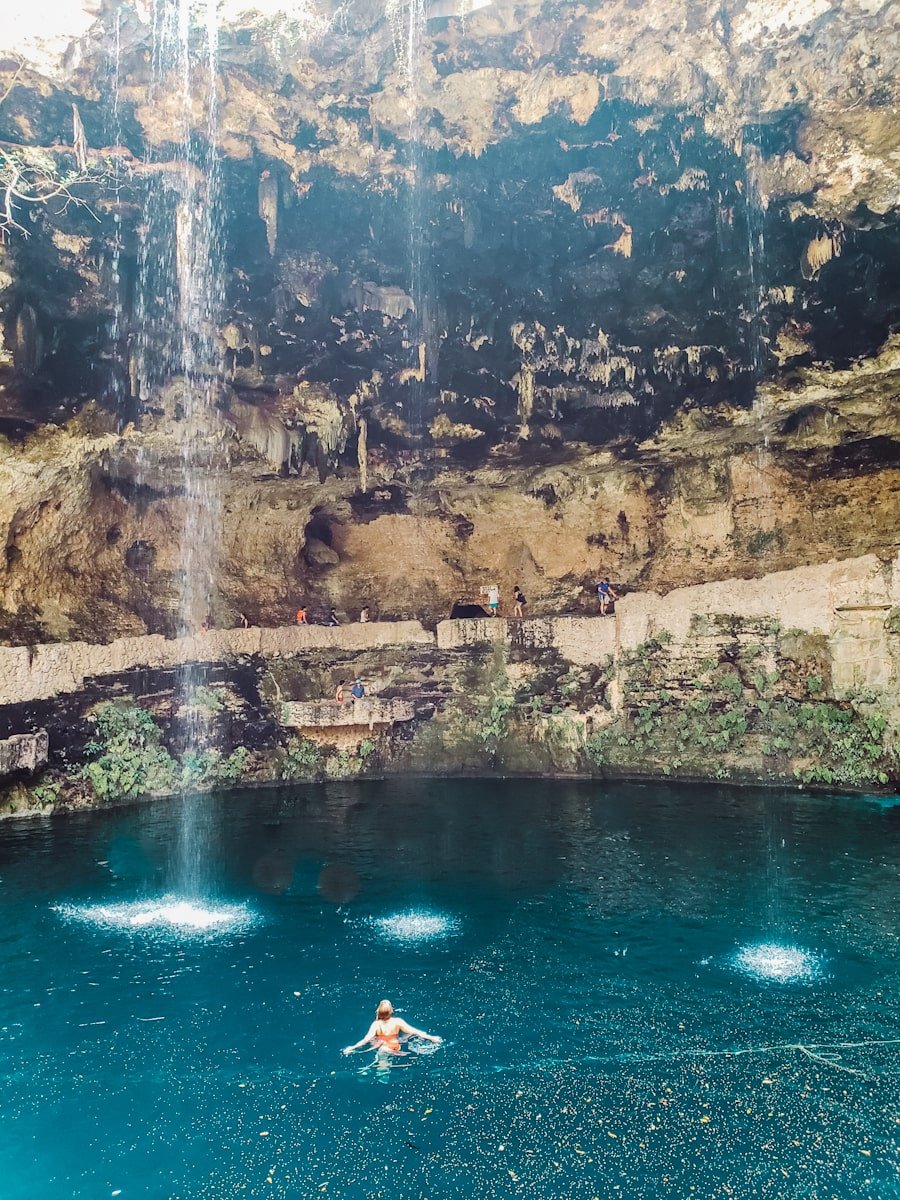
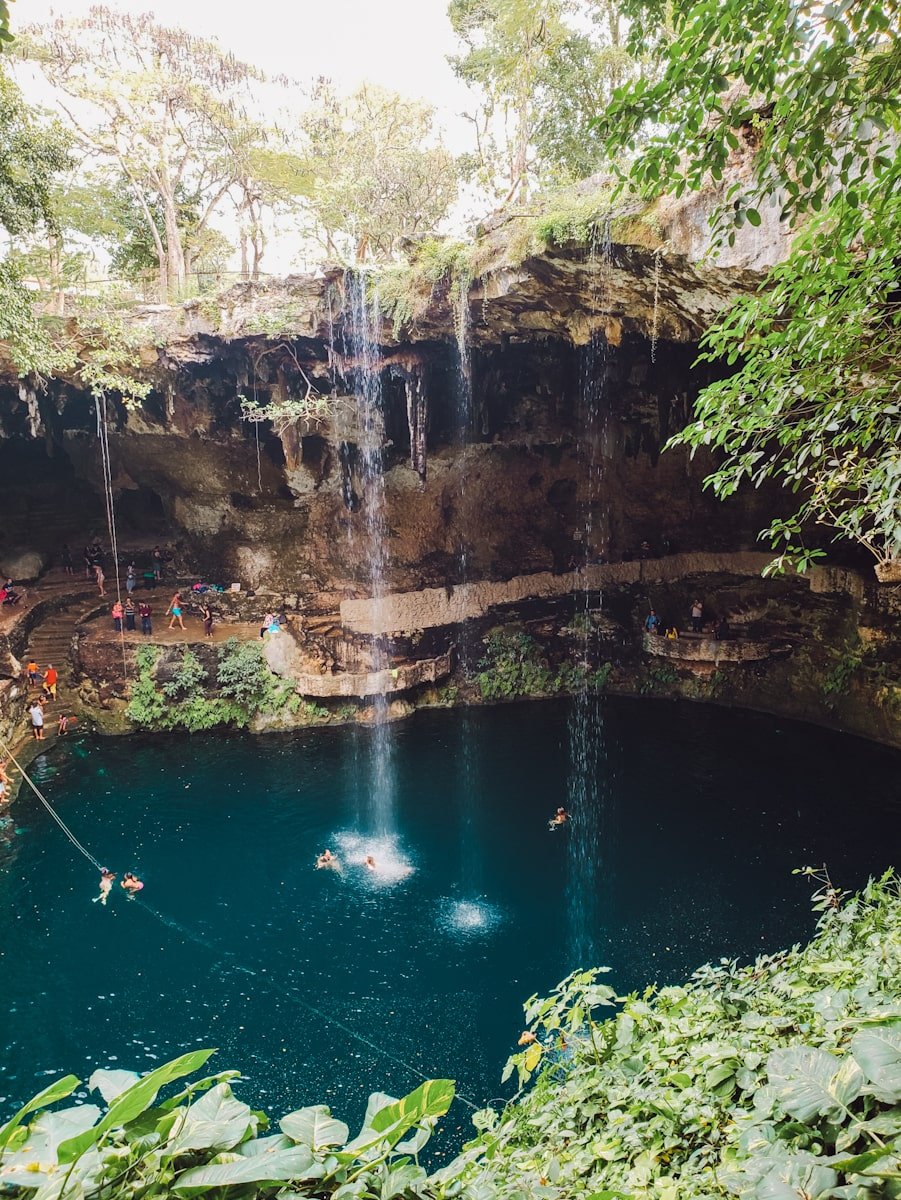
You cannot miss out on Valladolid if you visit anywhere in Yucatán (state)!
This adorable city has a bit of everything: culture, food, history, and cenotes—some of the coolest and most unique across the peninsula!
Start your cenote tour near Downtown Valladolid with Cenote Zaci.
It is, to this day, one of my favorite cenotes in Mexico, thanks to its jungly vibes, jumping opportunities, proximity to downtown Valladolid, and deep blue hue. An adventurous swimmer’s paradise!
If Zaci is not an option, or you need an alternative, then Cenote Saamal has just as good vibes and a lovely swimming hole.
Next, you can’t go wrong with Cenote Suytun for photography unless you want to line up shoulder-shoulder to take a photo.
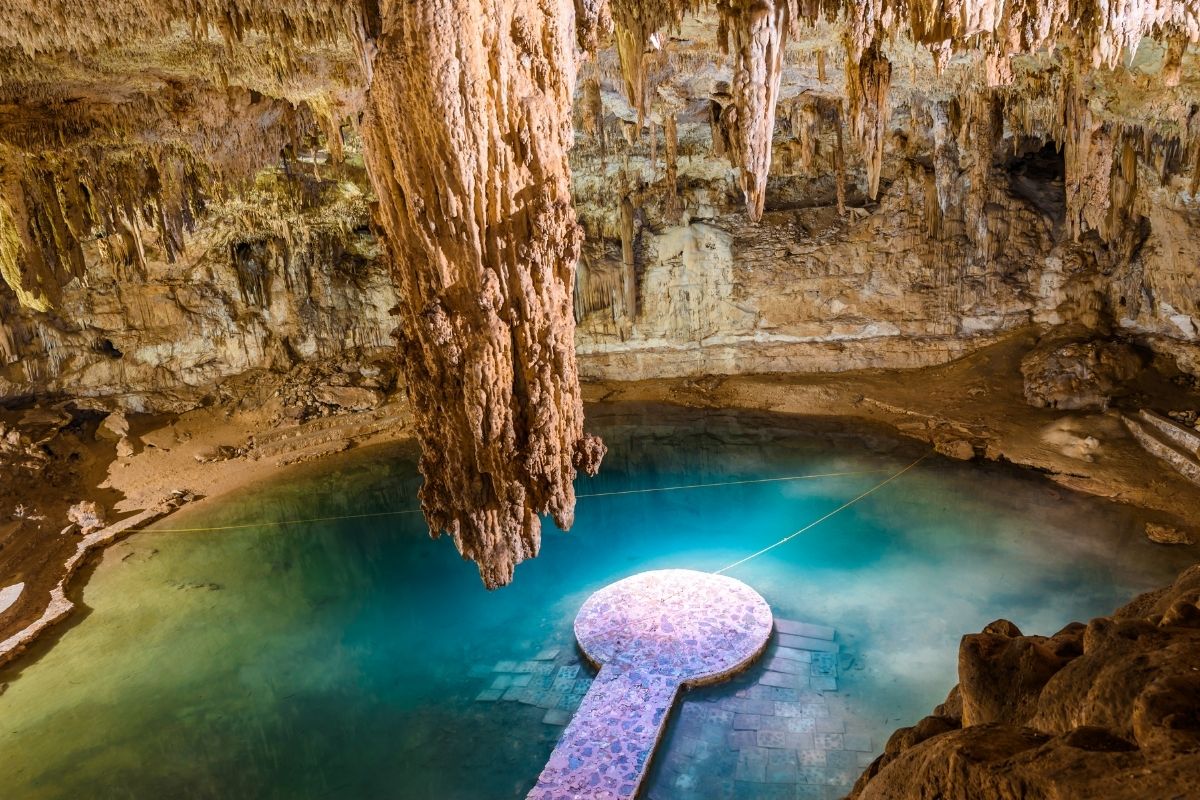
In earnest, you should consider skipping this cenote in favor of less-crowded yet similarly covered cave cenotes like Cenote Palomitas and Cenote Agua Dulce.
I much prefer tropical-jungly cenotes, which are ideal for swimming and diving.
For more off-the-beaten-path cenotes around Valladolid, check out Cenote Sac-Aua. This cenote “with an island in the middle” is still recommended by locals and offers a memorable experience with fewer crowds.
And if no crowds and rope swings are more your vibe, head to Secreto Maya Cenote!
While you’re near Secreto Maya, add another hour or two to dip in X Canché cenote (also known as Cenote Ek Balam). A nice way to explore this area is to combine the Ek Balams Ruins tour with a cenote visit.
All these cenotes north of Valladolid have one thing in common: they are amazing! And precisely what you think of when you set out to visit a jungly cenote in the middle of the Yucatán Peninsula.
Again, you can explore further away from the crowds if you rent a car and make your own cenote route.
➡️ Discover even more activities in my guide to the top things to do in Valladolid.
Cuzamá & Homún Cenotes (near Mérida)
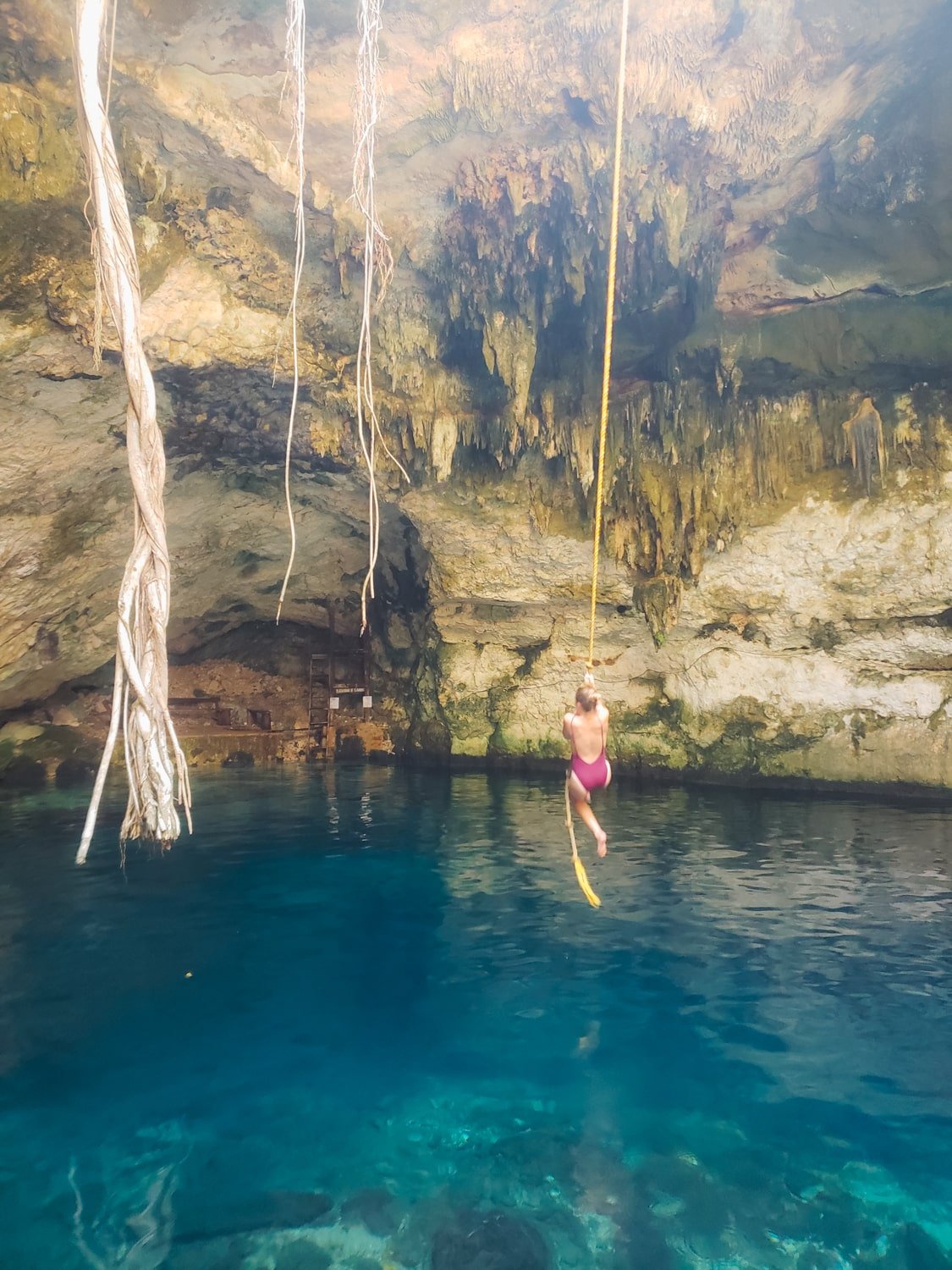
Compared to Valladolid, “Mérida’s” cenotes are removed from the city center and aren’t technically in Mérida.
In particular, a concentration of gorgeous, semi-open, and cave cenotes can be found in the small Maya towns of Cuzamá and Homún.
Luckily, these towns are reachable by bus (50 minutes) from Mérida and Izamal—the yellow town of the Yucatán—and, once there, you can tour the cenotes by hired motorcycle tuk-tuk.
Similarly, you can do a guided Cuzamá cenote tour from Mérida.
Either way, both Cuzamá and Homún villages arguably have the BEST cenotes in Yucatán.
In particular, you can visit multiple types of cenotes on the “Cuzamá cenote circuit,” but those tend to be busier. In my opinion, the Homun cenotes are a bit more hidden.
Between Cuzamá and Homún, my favorite cenote is Yaxbacaltun.
This cenote is a DREAM; years later, it has kept its magic. There is a rope swing, tree roots, fish, bats, and jungle vibes x 100. When we went, there were only locals around.
💦 After Yaxbacaltun, I recommend visiting Tza-Ujun-Kat Cenote (and the neighboring Cenote Pool Uinic), followed by 3 Oches Cenote and the three Homun Santa Barbara Cenotes.
If you have your own car, you can open Maps and find all the cenotes along the route as you explore dirt roads. Please be mindful if you choose to explore on your own, though.
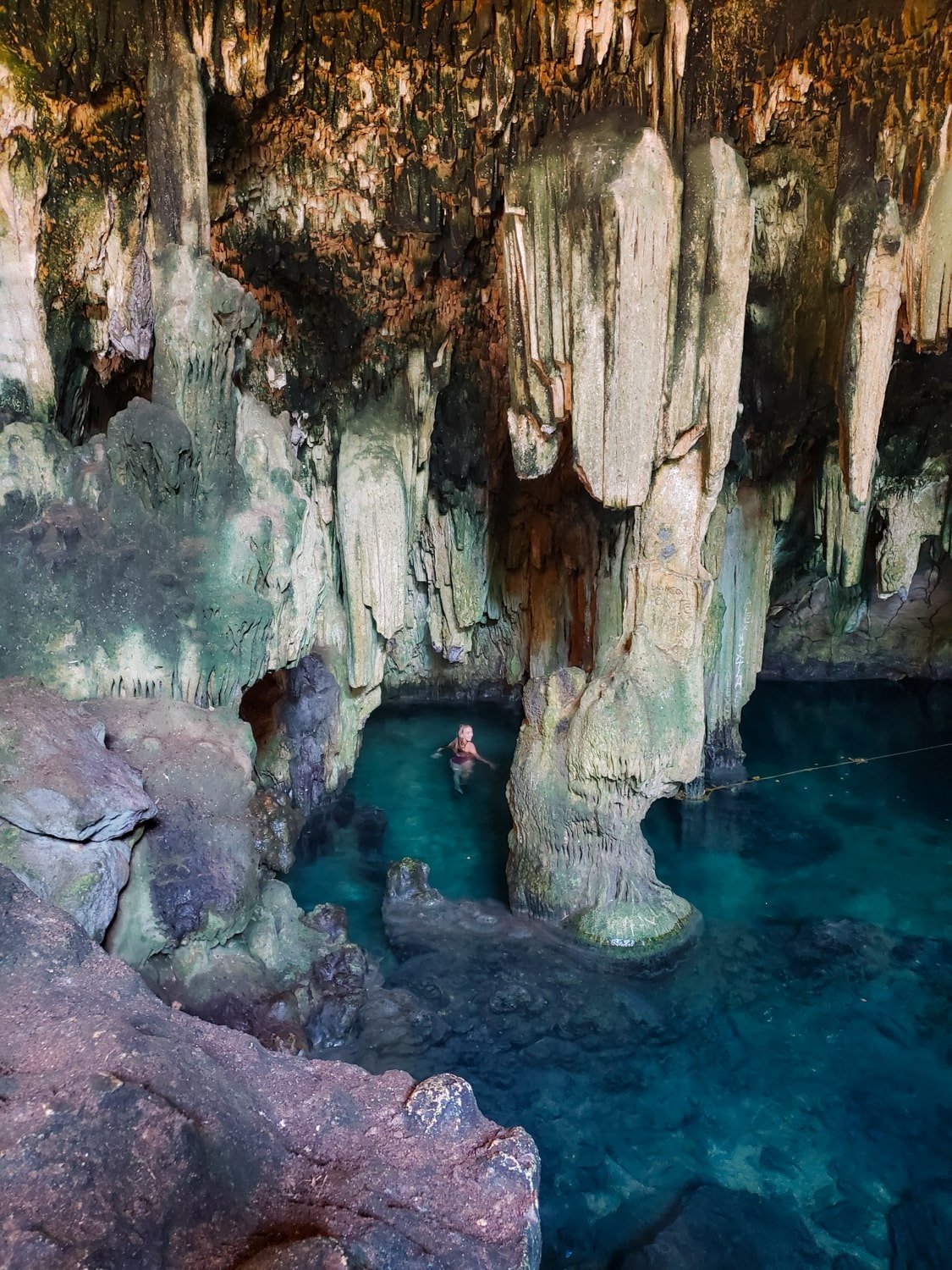
You can travel even further off the beaten path with a rental to reach hidden gems like Cenote Noh-Mozon. This beautiful pool-like, semi-open cenote is a gem.
Take note—many cenotes around Cuzmá and Homún are locally owned and operated by indigenous communities. Our guide explained that some families inherited these cenotes through generational land ownership upon discovering them in their private backyards.
While some families decided to open these cenotes to tourism, others have kept them private for personal use (how awesome is that!?).
Remember that these areas are still very local despite increasing tourism. Please respect local properties by not wandering into backyards without permission!
Cenotes Near Chichén Itzá
Everyone goes to Cenote Ik Kil as it is close to Chichén Itzá, but I’d highly advise against following the crowds.
Instead, venture out to find remote cenotes such as Cenote Lol-Ha, located in the village of Yaxunah (20km from Pisté).
You’ll be in cenote-heaven with an affordable entrance fee of $100 MXN, fewer crowds, and turquoise-blue water.
Cenotes in Quintana Roo
In Quintana Roo, most cenotes along the Riviera Maya stretch from Cancún down to Bacalar.
The cenotes of the Riviera Maya are arguably among the most visited due to their convenient location near the most popular destinations to visit on this side of Mexico:
- Tulum (around which there are dozens of cenotes)
- Coba
- Playa del Carmen
- Bacalar
Tulum Cenotes
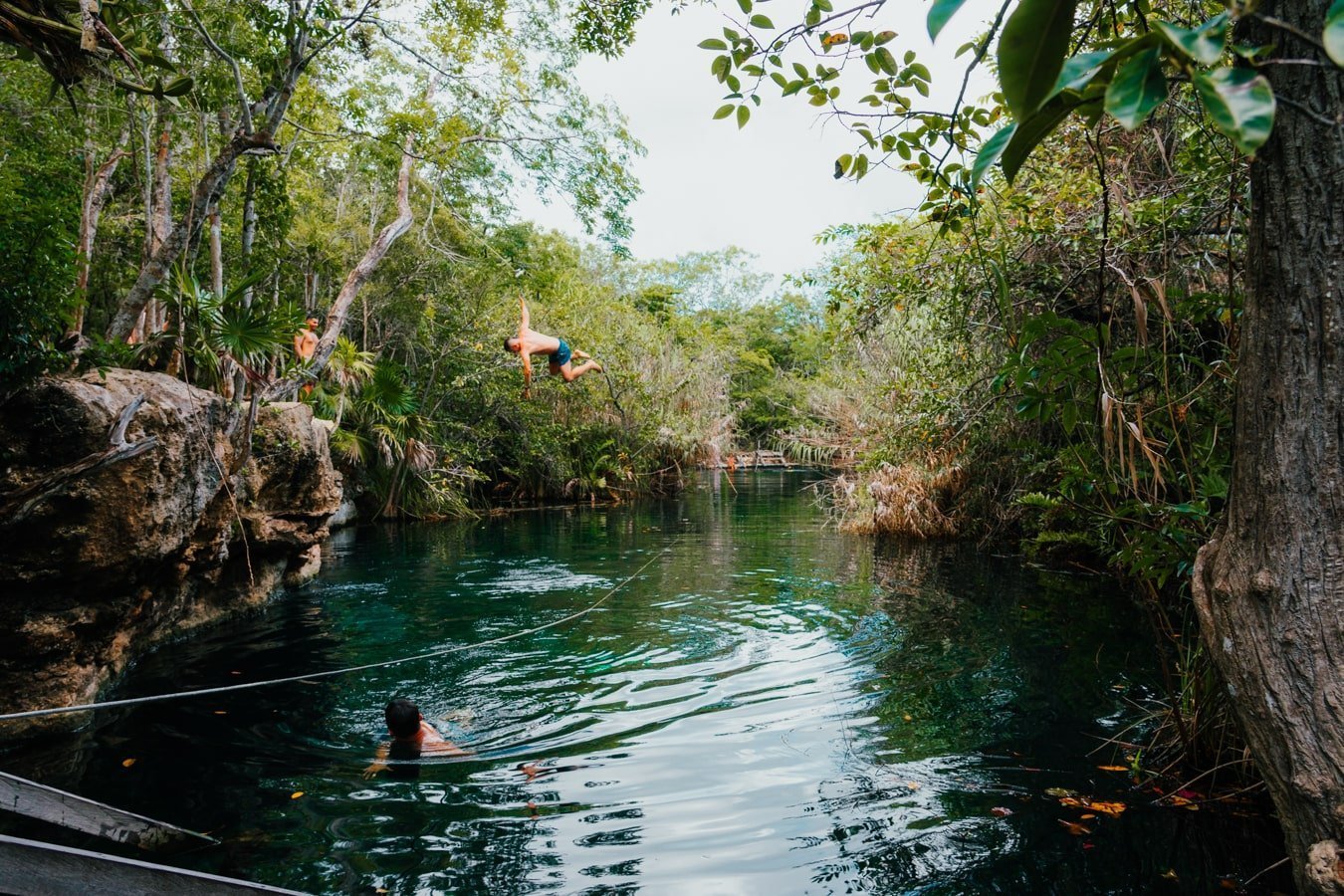
I will share just the top 3-5 must-visits for a unique Tulum cenote experience without going into too much detail as I do in my Tulum cenotes guide.
First, divers, casual swimmers, and jungle lovers should go to Cenote Cristal and Cenote Escondido. Both are superb for swimming and are close to Tulum without receiving the crowds of Dos Ojos or Gran Cenote.
Cenote Calavera is another cenote unique to Tulum; however, this one receives more visitors.
With a fun jumping hole, it often becomes a viral hotspot on Instagram. But those who want a peaceful cenote experience might wish to avoid it (or go early or late).
Otherwise, Cenotes Azul, Carwash, and Corazón near Tulum are local favorites, offering jungly, open cenote experiences.
Meanwhile, if you are PADI-certified, take advantage of Tulum’s flooded subterranean caverns, which are ideal for scuba diving and freediving.
For submerging into the depths, don’t miss out on El Pit, Jardin del Eden, Angelita, and Dream Gate cenotes for that next-level adventure.
Of course, Dos Ojos and Gran Cenote are incredible diving cenotes, too, but they are well-known and crowded.
Coba Cenotes
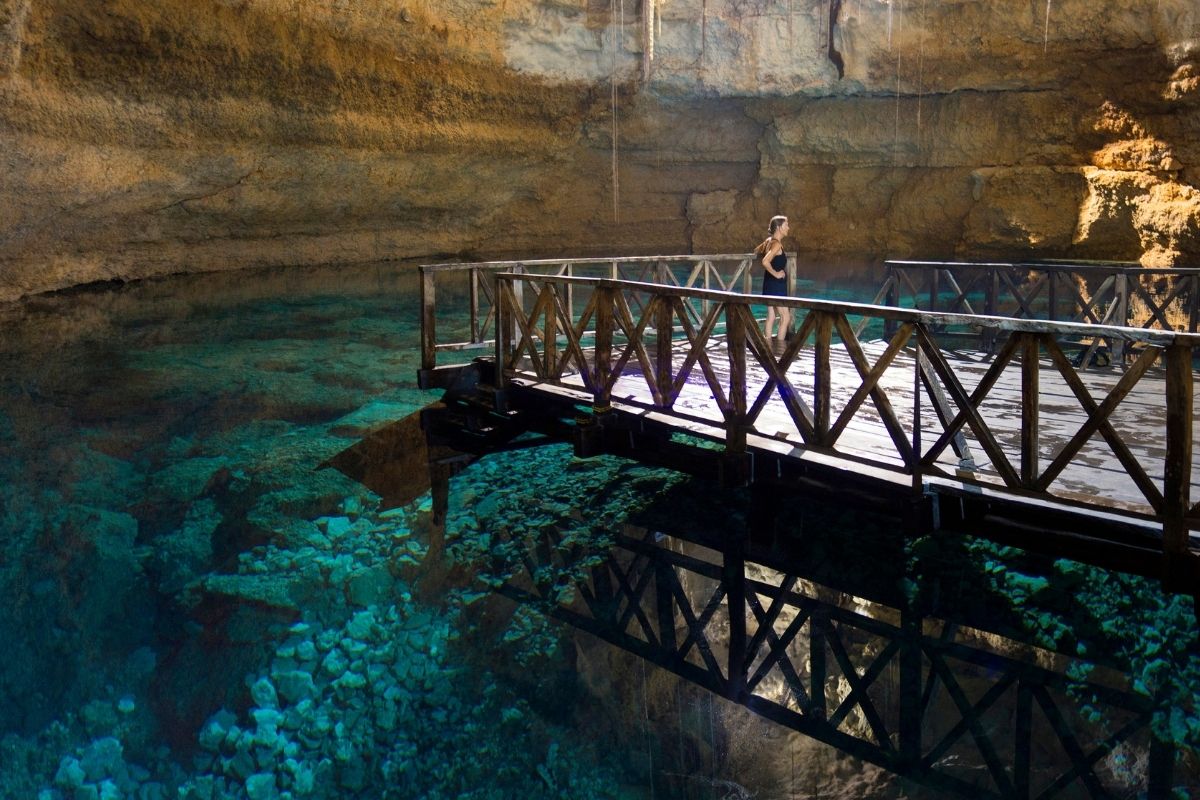
There are three incredible underground cave cenotes located near the Coba Ruins:
- Multum-Ha cenote
- Choo-Ha cenote
- Tankach-Ha cenote
- Entrance to each Coba cenote costs $100 MXN
You can visit all three or just one. They’re all similar and located just around the corner from the ruins, about a 5-10 minute drive down a series of dirt roads.
The easiest way to reach the Coba and its nearby cenotes from Tulum is by rental car.
The three Coba Cenotes feature deep cave cenotes, stalactites, and even some bats and fish!
Because the Coba cenotes are all underground, the water is much colder here than in the Tulum cenotes, which are, in contrast, mostly semi-open and warmed by the sun!
Cenote Choo-Ha has even more stalactites than Multum-Ha and is smaller and shallower. However, it’s still worth it!
Choo-Ha is located on the same road you take to reach Tankach-Ha, so I recommend visiting both if you have the time.
Cenote Tankach-Ha is the big sister of Cenote Choo-Ha but with a bit more pizazz.
Instead of straight stairs leading to the entrance, Tankach-Ha has a zig-zag wooden staircase that takes you down to the water.
That means you have a better “aerial view” of the cenote than the Choo-Ha and Multun-Ha cenotes.
Tankach-Ha is a deep cenote ranging from 15 to 115 ft in depth. After all, its name in the Mayan language means “deep water.”
Cenotes Near Playa del Carmen
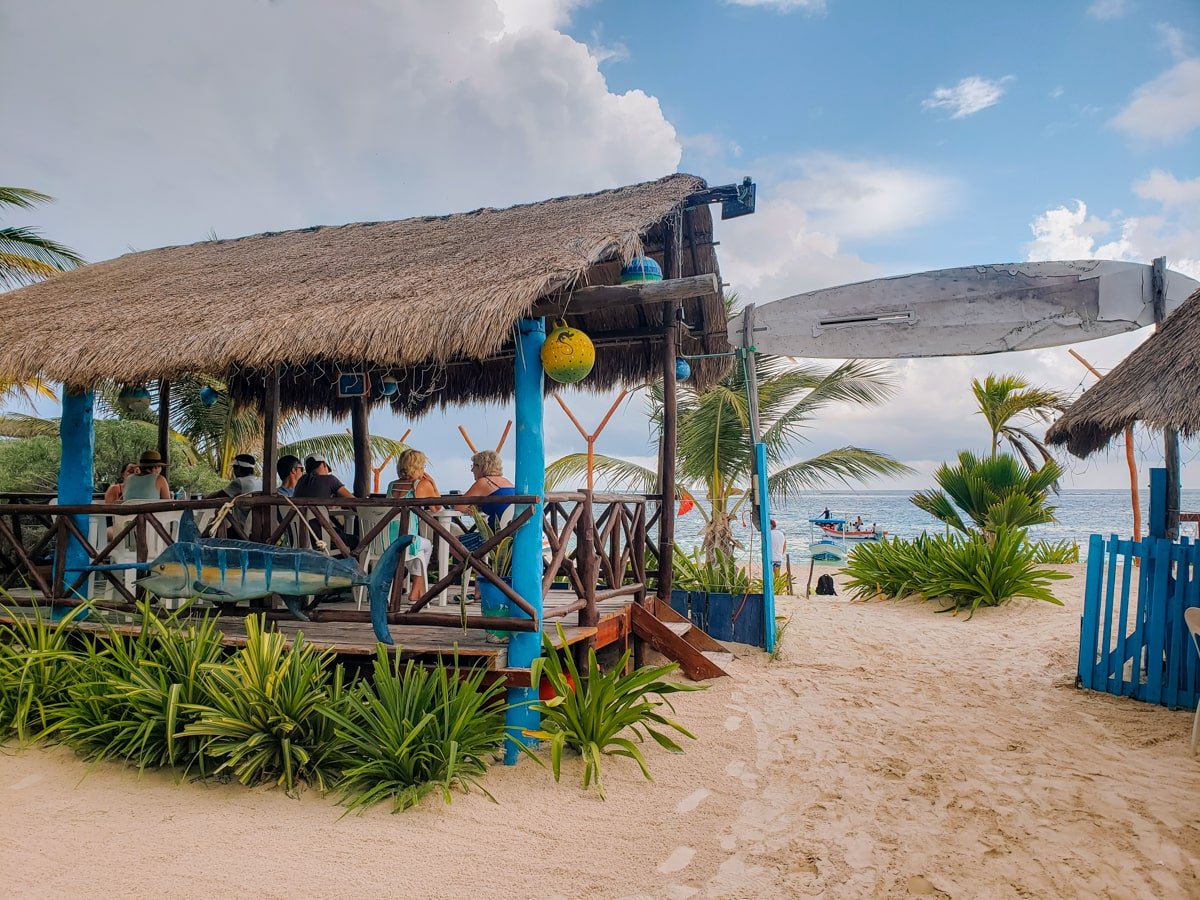
Playa del Carmen’s cenotes are far from being off the beaten path, but have you heard of Puerto Morelos? Akumal?
This stretch of paradise between Cancún and Tulum hides over 100 cenotes, the best of which have not yet been discovered by the masses.
No wonder it got its nickname, the “Cenotes Route” (Ruta de Cenotes).
While you can visit Cenote Azul, a long-time favorite, why not adventure to more secluded cenotes such as Coxol-naj-ha cenote or the Orquidea cenote?
And you’d be shocked to see how beautiful (and private) Popol Ha, Kin Ha Cenote, and Cenote Elvira are!
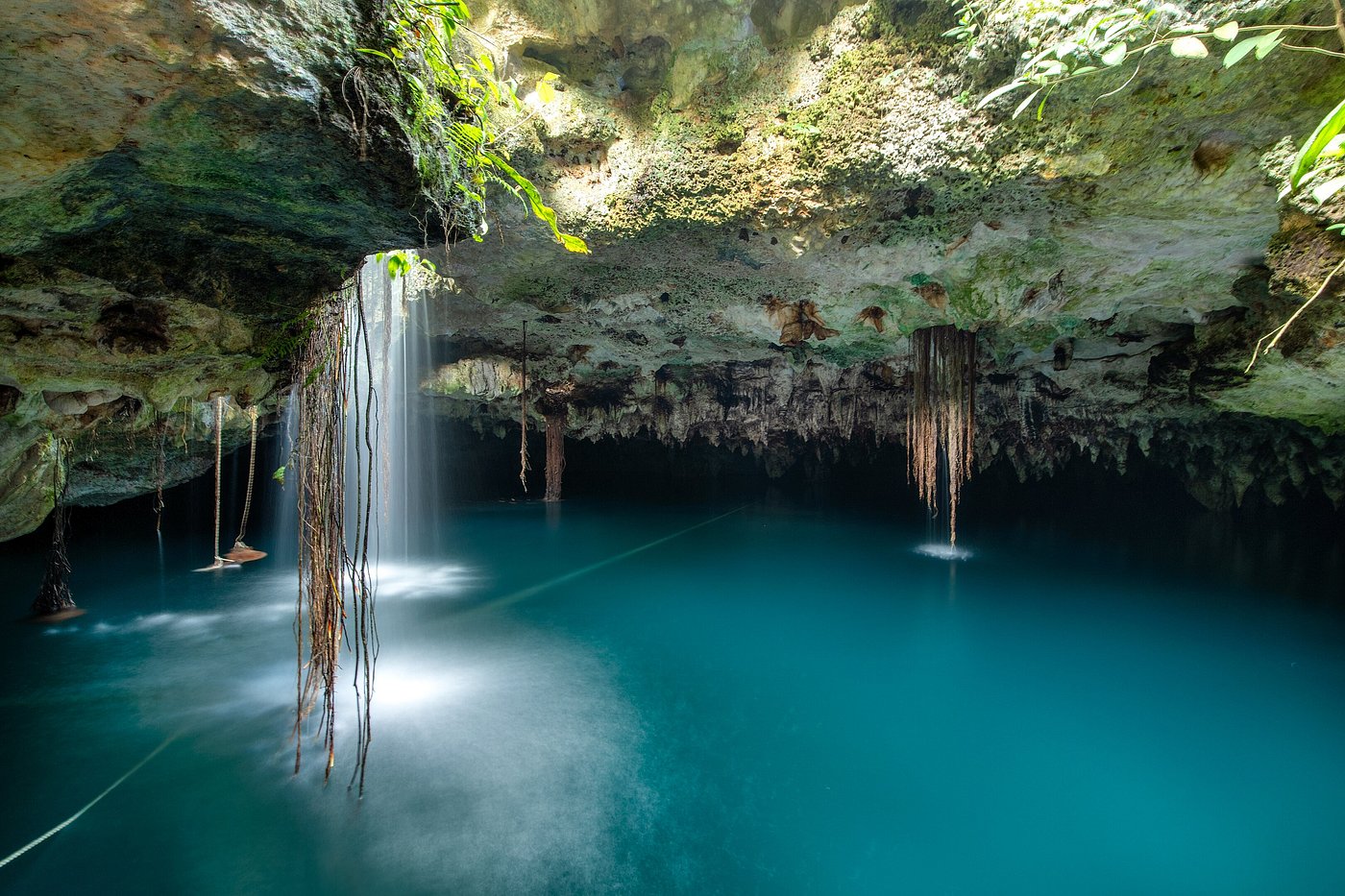
These are gorgeous cenotes, but they don’t get as much attention.
The Riviera Maya is a prime spot for cenote hunting, but perhaps even more unique to the area is its massive underground cave system.
It’s called the Rio Secreto, not your regular cenote! Similarly, you should check out Dos Ojos and Sac Actun, which are the longest underground rivers in the world.
Rio Secreto is an underground labyrinth.
Even though it’s not a cenote, this natural outdoor crystal museum with insanely turquoise-blue water and dramatic stalactites and stalagmites is one must-see place.
So, if you do ONE tour while around Playa del Carmen, let it be this one! Then, you can save your off-road, non-touristy cenote visits when you reach Yucatán.
Bacalar Cenotes

Bacalar is one of Quintana Roo’s and Mexico’s Magic Towns, and for good reason! It is a naturally gorgeous place to visit and the trip down south, nearly to Belize’s border, is well worth it.
While Bacalar’s gem is its 7-colored lagoon which you can kayak in, there are technically sinkholes (cenotes) you can swim in too. However, they are older and open cenotes, so you won’t find the cave-type cenotes here.
These open-air cenotes are nearby or adjacent to the lake. Perhaps the best cenote is the 90m-deep Cenote Azul Bacalar.
Again, if you’re down in Bacalar, you’re there for other reasons then just cenotes.
Cenotes in Campeche
Compared to Yucatán and Quintana Roo, Campeche is one of the lesser-visited states of the Yucatán Peninsula, which is precisely why you should not skip visiting.
However, it does have fewer cenotes compared to Yucatán or Quintana Roo. At the same time, with fewer crowds, you’ll find more hidden gems that aren’t yet spoiled by mass tourism.
While Campeche has fewer known cenotes, it’s still worth adding to your Yucatán itinerary. On a road trip through Campeche, you should visit the jaw-dropping Calakmul Ruins buried deep in the jungle.
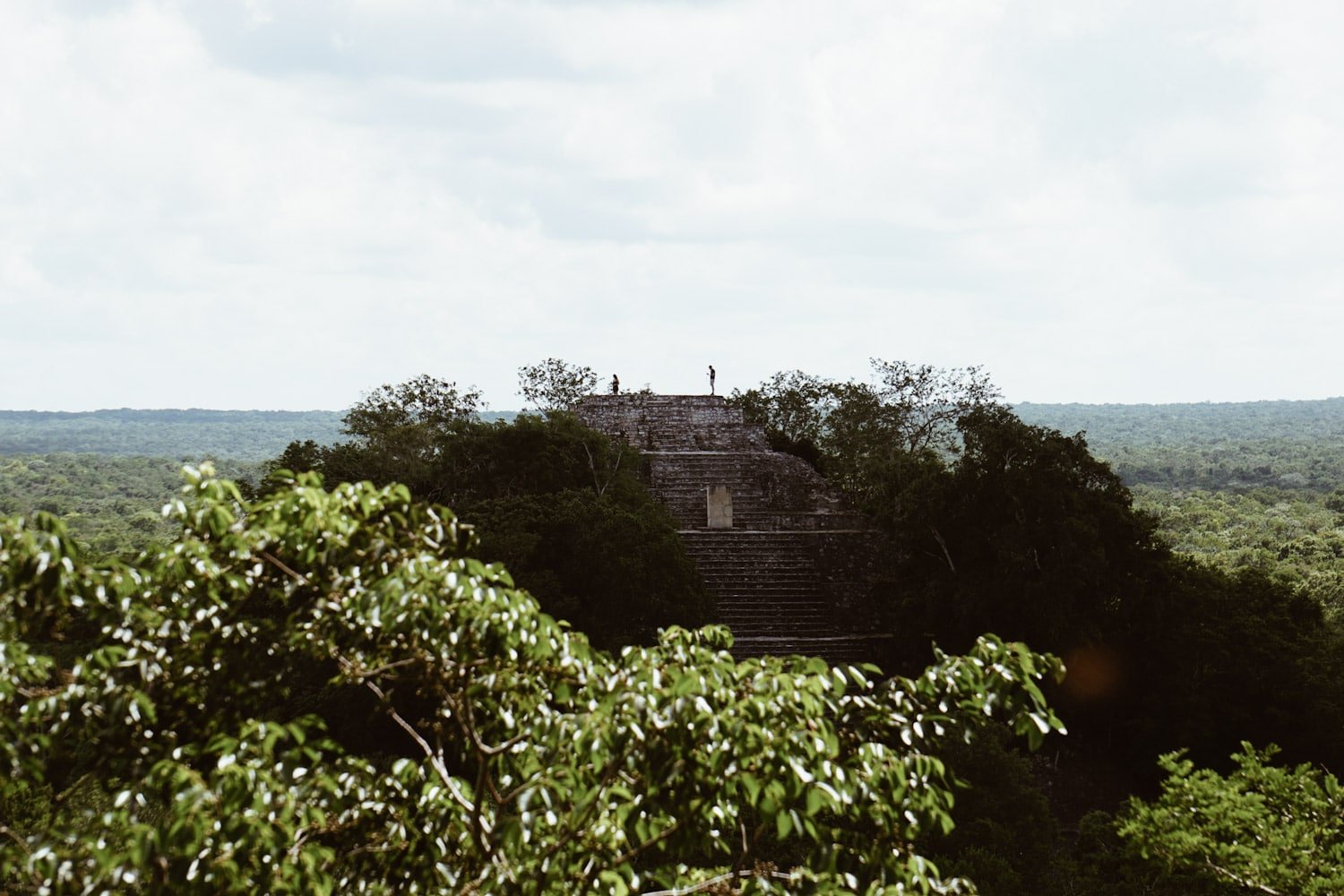
On the route out of Calakmul going toward Campeche city on the west coast of Campeche (unless you’re heading back to Quintana Roo), stop by the Miguel Colorado Cenote.
This massive, open-air cenote is unlike others across the Yucatán. It’s genuinely over-sized, and the best way to enjoy it is by kayak!
If you are looking for cenotes across the peninsula, you’ll find a wild concentration of famous and remote cenotes between Mérida and Tulum.
Those who travel deeper and further off-radar and into the heart of Yucatán will be handsomely rewarded!

Have a few cenotes recommendations to add to this guide? Feel free to share them in the comments below!



